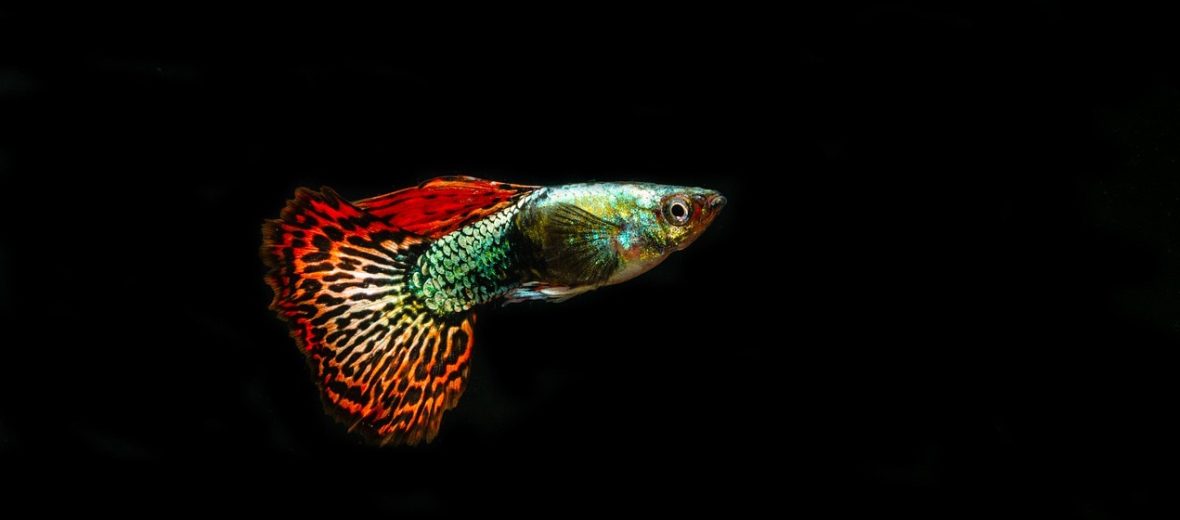
The guppy, named after Robert John Lechmere Guppy, the man who discovered them, can be found in the wild in Antigua, Barbuda, Barbados, Guyana, Suriname, Tobago, Trinidad, and Venezuela. However, they have been introduced to every continent around the world, sans Antarctica. They prefer smaller streams, slower-flowing rivers, lakes, ponds, and pools. Some can even be found in brackish (slightly salty) water. However, most people see them in aquariums.
First the Stats…
Scientific name: Poecilia reticulata
Weight: Up to .03 ounce
Length: Up to 2.4 inches
Lifespan: Up to 3 years
Now on to the Facts!
1.) Guppies are also known as rainbowfish, lending to the male’s bright colorations.
2.) These fish were first discovered in 1866.
3.) Guppies are omnivores (eat plant and animal matter). They feast on detritus, diatoms, mineral particles, plant fragments, invertebrates, zooplankton, and various aquatic insect larvae.
4.) Birds and larger fish all prey on guppies.
5.) Guppies are often utilized as model organisms in certain behavioral studies, ecology, and evolutionary studies.
But wait, there’s more on the guppy!
6.) The female guppies mate with numerous partners throughout the year. This is known as polyandry.
7.) Females are live bearers, in that they give birth to live fry and don’t lay eggs.
Did you know…?
To avoid inbreeding, females will prefer the advances of a male not of her own lineage. That being said, a male from another bloodline will be preferred to a male sibling’s advances.
8.) Once the fry are born, they immediately seek shelter, as mom and dad will happily eat them all, if given the chance.
9.) In the wild, females birth young up to 3 times per year. In captivity, females will birth fry each month or so.
10.) The female will give birth to up to 60 fry each time; with some instances of up to 200.
But wait, there’s still more on the guppy!
11.) Guppies are schooling fish that tend to stick together. This, in the wild, is practiced as a safety mechanism against predators.
12.) The guppy is also known as the Million Fish. This is due to their ability to reproduce often and with decent numbers.
13.) They are diurnal (active during the day).
14.) Anti-predatorial behavior, known as predator inspection, has been documented. This is a behavior wherein a guppy will approach a potential predator (avoiding their attack cone) and inspect them to see if there is a threat or not.
Now a Short Guppy Video!
Be sure to share & comment below! Also, check out the Critter Science YouTube channel. Videos added regularly!
Want to suggest a critter for me to write about? Let me know here.
Think you know a lot about critters? Try your hand at these fun, free quizzes:



